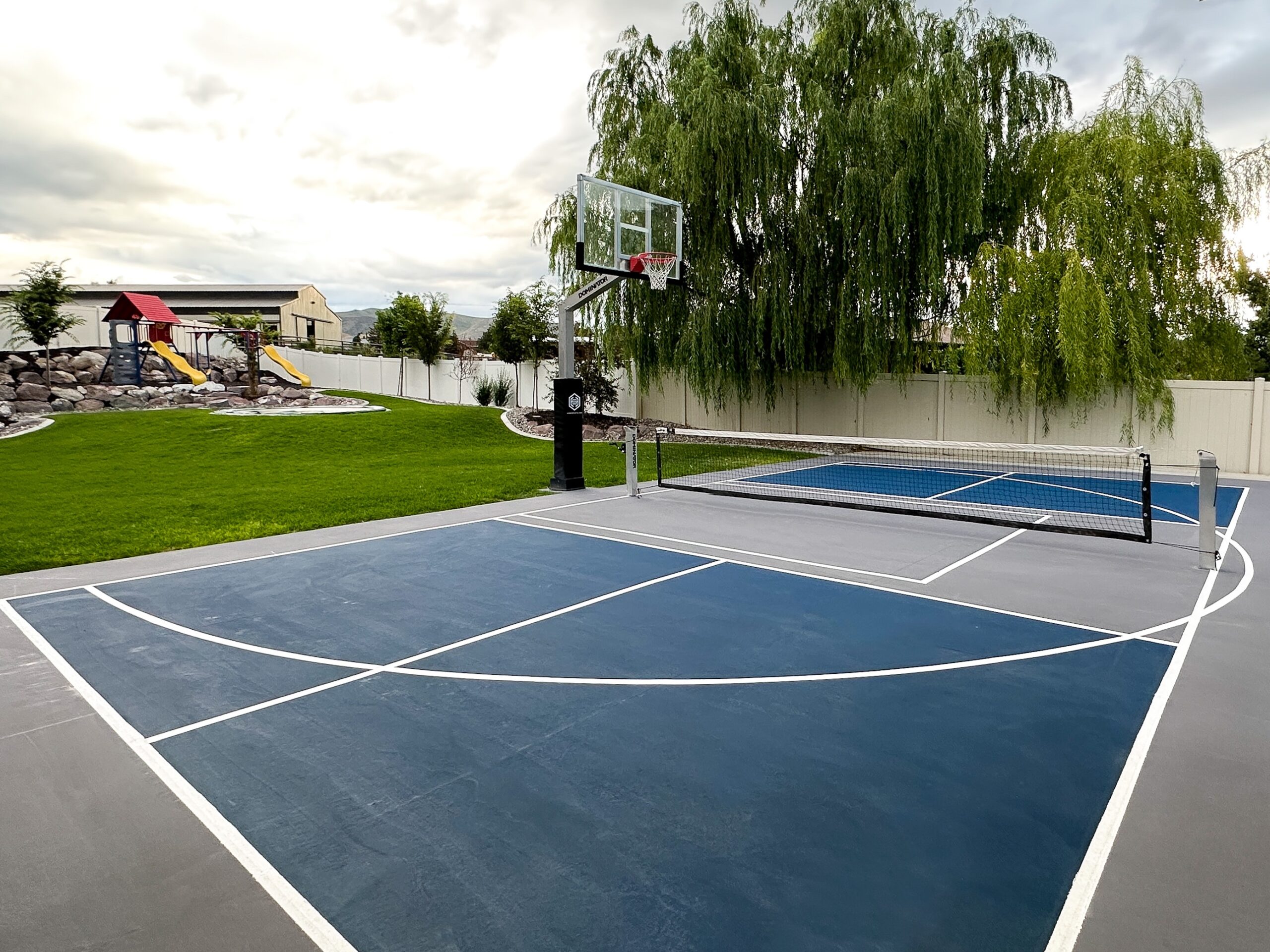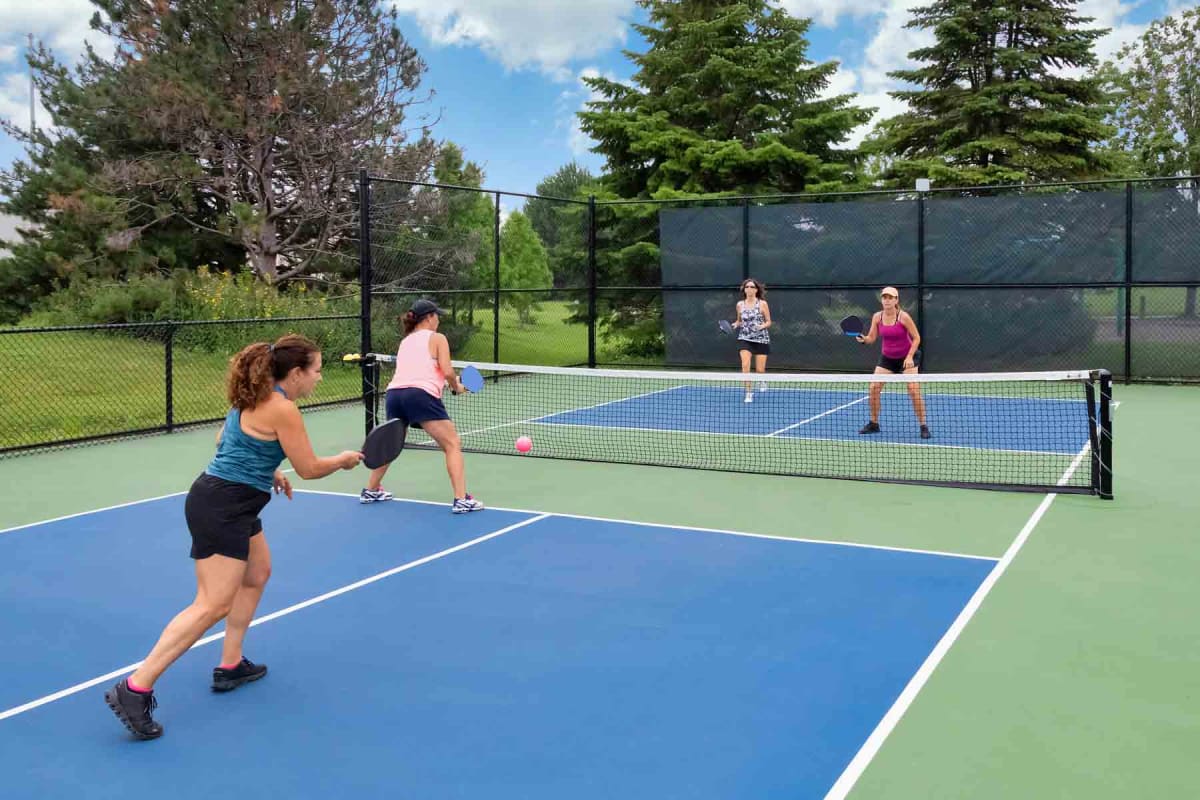Boost Citizen Interaction With Community-Driven Pickleball Court Projects
The introduction of community-driven pickleball court tasks offers an one-of-a-kind possibility to promote neighborhood engagement and reinforce area ties. The real concern stays: how can these grassroots efforts be purposefully executed to make sure sustainability and inclusivity in diverse areas?
Importance of Area Interaction
Area involvement is an important element in the effective development of pickleball court tasks, as it cultivates a feeling of ownership and cumulative obligation among citizens. When area members are proactively associated with the planning and implementation phases, they are much more most likely to advocate for the project's long-lasting success. Involving stakeholders such as regional players, families, and leisure groups guarantees that the facilities satisfy the varied requirements and preferences of the area.
Additionally, neighborhood interaction grows a helpful setting where locals really feel encouraged to contribute their concepts and resources. Pickleball court construction. This collective strategy can lead to innovative solutions that boost the style and capability of the courts, making them a lot more appealing to a wider target market. In addition, including locals in decision-making procedures can reinforce social ties, advertising inclusivity and unity within the community
The exposure of area assistance for a pickleball task can likewise play a critical duty in safeguarding financing and approval from neighborhood authorities. By demonstrating a shared commitment to leisure development, communities can effectively advocate for sources and plan modifications that favor the facility of pickleball courts, ultimately enriching the neighborhood culture and recreational landscape.
Steps to Start a Job
Starting a pickleball court task requires a methodical strategy that develops on the structure of neighborhood interaction developed in previous discussions. The very first step is to construct a task committee consisting of regional stakeholders, enthusiasts, and reps from pertinent organizations. This diverse group makes certain that numerous perspectives are taken into consideration.
Following, conduct a needs assessment within the area. Surveys, emphasis teams, and public conferences can be efficient in determining interest and gathering input on prospective court areas, wanted amenities, and scheduling choices. Following this, create a task plan laying out goals, obligations, and timelines.
As soon as the plan is in location, involve with local authorities to comprehend zoning guidelines and any kind of needed authorizations. Connecting transparently with the neighborhood throughout this process is vital, as it fosters count on and encourages more engagement.
In addition, organizing area occasions can assist preserve momentum and excitement. These events can function as platforms for further discussion and assistance to enhance area ties. Finally, record every step taken and maintain detailed documents, as this will be helpful for future phases of the task, including funding and resource purchase.
Funding and Resources Available
Securing funding and resources for a pickleball court job is usually an important step that can establish the project's expediency and success. Numerous methods exist read this article for acquiring financial backing, varying from public financing to personal sponsorships. Local federal government grants, often aimed at advertising neighborhood health and recreation, can supply substantial sponsorship for such initiatives.
In enhancement to government sources, nonprofit organizations and structures frequently provide grants specifically for sports and community development tasks. Involving regional businesses as enrollers can also be a rewarding technique; numerous companies are excited to buy neighborhood initiatives that boost their company social responsibility profile.
Crowdfunding systems have actually arised as a practical option for grassroots fundraising, allowing community members to add directly to the project. This strategy not just increases funds but likewise cultivates a sense of possession among participants.
Style and Preparation Considerations
Effective layout and planning are essential components of any type of successful pickleball court task following the procurement of funding and sources. A comprehensive assessment of the recommended location is essential; this consists of assessing availability, proximity to existing community facilities, and the potential for exposure and involvement.
The layout of the court should abide by official dimension specifications while considering the bordering setting. Integrating attributes such as seats, color structures, and ideal illumination can substantially improve gamer experience and spectator enjoyment. Products chosen for the court surface area ought to focus on longevity and security, with alternatives like acrylic or asphalt offering optimum performance.
Involving community participants in the style process fosters a sense of ownership and guarantees that the facility meets regional needs - Pickleball court construction. This can be achieved via public assessments and surveys, enabling stakeholders to reveal their choices and problems
Sustainability needs to also be a priority; integrating green materials and methods can contribute to long-lasting practicality. Developing a maintenance strategy to guarantee the court stays in excellent problem will support continuous community involvement and participation in pickleball activities.

Success Stories and Study
Highlighting the transformative impact of community-driven campaigns, numerous success tales illustrate how collaborative initiatives have actually led to the development of vibrant pickleball courts throughout numerous areas. One significant instance is the campaign in a town in Florida, where residents affiliated to convert an underutilized tennis court into a committed pickleball facility. Via fundraising occasions and partnerships with neighborhood organizations, the neighborhood elevated enough funds to set up new nets, resurfacing, and lines, inevitably fostering a vibrant center for regional players.
Similarly, in a suburb of The golden state, a grassroots activity arised to create pickleball courts in a regional park. The job not only engaged volunteers for construction however that site likewise consisted of workshops to engage community participants in the sporting activity. Therefore, the courts came to be a centerpiece for social communication and fitness, bring in players of every ages.
These case research studies exhibit exactly how community-driven projects can improve regional engagement, advertise exercise, and reinforce social bonds. By leveraging collective sources and enthusiasm, neighborhoods can efficiently create and sustain pickleball centers that offer diverse populaces and cultivate a feeling of belonging.

Final Thought
By prioritizing stakeholder participation throughout the preparation and implementation stages, these campaigns can successfully resolve varied area requirements. Ultimately, such efforts add to the improvement of public areas into vibrant facilities of fitness and social communication, enhancing area ties.
The introduction of community-driven pickleball court jobs presents a special chance to promote local engagement and strengthen community connections.Neighborhood engagement is an essential element in the successful advancement of pickleball court jobs, as it promotes a feeling of possession and collective responsibility amongst locals. When neighborhood participants are proactively entailed in the planning and execution stages, they are more likely to advocate for the job's long-term success.Starting a pickleball check court task needs an organized strategy that develops on the structure of neighborhood engagement established in previous conversations. The project not only involved volunteers for construction however additionally consisted of workshops to involve neighborhood members in the sport.